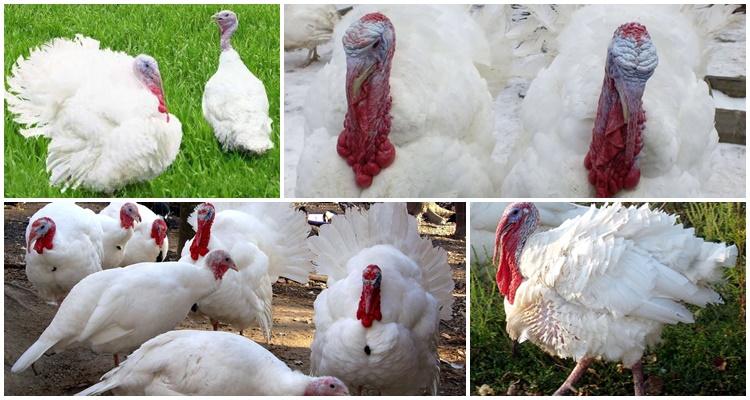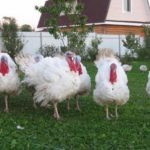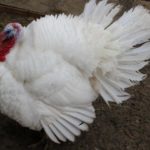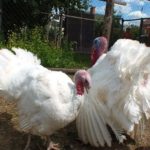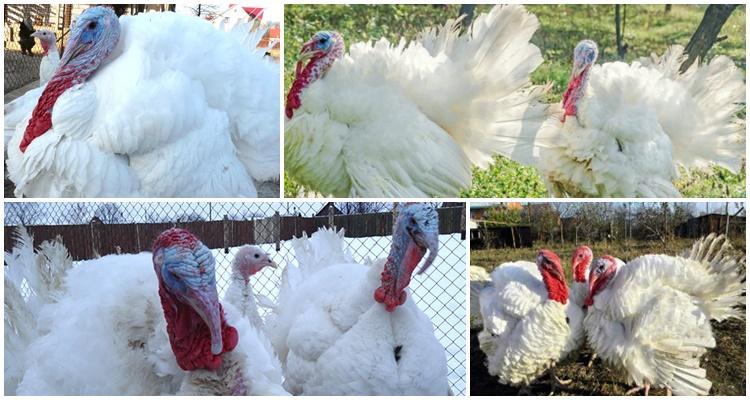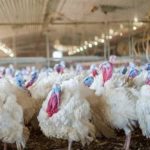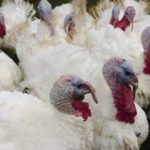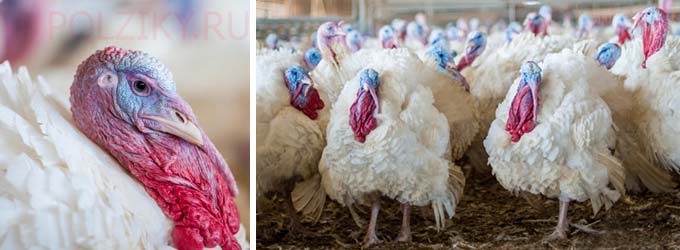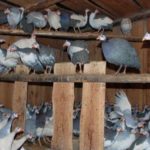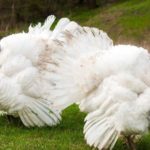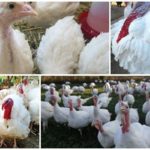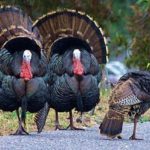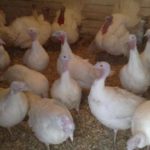Turkeys are the largest poultry, but among them there are breeds whose representatives are heavier. These can be called hybrid converter cross turkeys. Let's consider the features of the breed, characteristics, productivity. Beginning poultry farmers will be interested in learning about the technology of keeping, feeding and breeding poultry in households.
Origin and characteristics of the breed
Hybrid converter – broiler hybrids.Bred by crossing 2 breeds: bronze broad-chested and Dutch white. Hybrid turkeys are intended for breeding in industrial poultry farms and private backyards. Hybrid Converter turkeys are produced by Hendrix Genetics Company, which has breeding plants in the USA, Canada, and European countries.
For Canadian turkeys The cross is characterized by the usual body type for broilers. They have a massive, strong body with developed muscles. The legs are straight, strong, the head is small. The plumage of Hybrid Converter hybrids is white.
Dimensions and weight
Hybrid converter is a heavy cross; when raised for meat, birds are slaughtered at the age of 5 months. The table shows by month how weight changes depending on the age and sex of the bird.
| Age in months | Male weight | Female weight |
| 1 | 1,5 | 1,2 |
| 2 | 4,8 | 3,7 |
| 3 | 9,8 | 7,3 |
| 4 | 14,3 | 9 |
| 5 | 17,8 | 11,8 |
During the first month, hybrid converter chicks grow to 1.2-1.5 kg. By day and by week it can be expressed as follows:
| Days of the week | Male weight | Female weight |
| First 3 days | 56 | 50 |
| 1 Week | 160 | 140 |
| 2 weeks | 390 | 340 |
| 4 weeks | 1400 | 1100 |
Productivity
The hybrid converter hybrid has productive characteristics consistent with other breeds and meat crosses. When slaughtering a 5-month-old turkey, the slaughter meat yield is 80-85%. Almost a third of the total volume falls on the sternum. The meat is juicy, not fatty.
From one turkey you can get 8 dozen eggs per season, and with increased nutrition - up to 15 dozen. All eggs are used for food; it is not advisable to leave them for reproduction, since the birds are hybrids and when crossed with each other, the offspring do not inherit all the valuable qualities.
Main pros and cons
Comparing the pros and cons of hybrid converter hybrids, you can see that the advantages outweigh the disadvantages.
Subtleties of maintenance and care
Hybrid converter hybrid turkeys can be raised in a regular outbuilding. It is recommended to keep them separate from other poultry. When growing from the first days, you need to maintain cleanliness and order in the poultry house, maintain temperature (20˚C) and humidity (60%). Lighting lasting 14 hours must be maintained in winter, using artificial lighting.
Ventilate the room daily; it is convenient to do this when the birds go out for a walk. You can walk the livestock in winter, if there is no severe frost. Change the litter as it gets dirty, not only in the house itself, but also in the walking area. Bedding material is straw, peat, sawdust or shavings.
The walking yard must be fenced with a net at least 2 m high, as the bird can fly over it. Select the paddock area at a rate of at least 1 square. m. for 1 bird. The area of the room in which turkeys live can be 2 times smaller. It is impossible to save on space; when kept in a crowded environment, turkeys often get sick or become aggressive, attack each other, peck and fight. This leads to a decrease in productivity, both meat and egg.
Diet
To feed Hybrid Converter turkeys to the weight promised by breeders, you need to feed them plenty and complete food. Then by the age of 5 months you can send them to slaughter. By this time, the weight of males can exceed 15 kg, females - 10 kg.
For adults
Adult hybrid converters are fed complete feed.Industrial mixtures contain all the nutrients birds need for development and growth. Turkeys don’t need anything other than high-quality feed and water. They can live on this diet for the rest of their lives.
As a vitamin-mineral component, add yeast, meat and bone meal, shellfish, and salt to the mixture. The consistency of the mash should be such that birds swallow it without problems, that is, not dry, but not too wet. The serving size is calculated based on the amount that turkeys can eat in 30 minutes.
Adult turkeys are fed 2-3 times a day. The duration of fattening for meat is 5 months. During this period, the birds grow intensively; after 5 months, growth decreases. Growing becomes less profitable.
For chicks
The first month of turkeys’ life is important because during this period the further potential of the livestock is laid. Turkey chicks can be fed directly with compound feed; special mixtures are produced for chicks of different ages. Turkeys can also be fattened to slaughter age with compound feed.
In addition to feed, you can use grain mixtures. They are made from ground grains of various agricultural crops. Chopped grass, grated vegetables, and root vegetables are added to the grain. To replenish the body of turkey poults with mineral elements, premixes, chalk, and salt are mixed into the mixture. Newly hatched turkey poults are fed 5-6 times a day at first; by the age of one month, the number of feedings is increased to 3-4 times.
How to breed the hybrid breed at home
Since this is a cross and not a breed, breeding at home from your own stock will not allow you to obtain pure hybrid converters. With each generation, the offspring will increasingly lose characteristic features, such as large weight gain. Therefore, it does not make sense to receive eggs from your turkeys and put them in an incubator.
You will have to either buy young animals and raise them, and then purchase new ones, or buy incubation material and get turkey poults from it. You need to buy broiler turkey poults from breeding poultry farms that guarantee the purity of the cross.
Diseases and their prevention
Hybrid converter turkey poults must be raised separately from any other poultry. Turkeys can suffer from infectious diseases - colibacillosis, mycoplasmosis, coccidiosis, histomoniasis. Infections can kill both young and adult birds. Therefore, at the slightest sign of illness, you need to diagnose and begin treatment.
As a preventive measure, it is necessary to vaccinate the livestock, give it antibiotics and vitamin preparations. And, of course, do not forget about cleaning the room, changing the bedding more often, washing the feeders, and removing leftover food.
Birds that are sick or exhibit suspicious signs should be immediately placed in a separate pen so that they do not infect others. New turkeys should first be quarantined for 2 weeks and, if healthy, placed into a flock.
Diarrhea is considered a particularly serious sign of gastrointestinal dysfunction or a symptom of infectious diseases. It can lead to a slowdown in development and death of young animals. Diarrhea can be caused by food poisoning or infection.It is necessary to correctly determine the cause of the disorder before starting treatment.
Like other turkeys, cross hybrids can be attacked by helminths and external parasites. They use anthelmintic drugs against them, and feed turkeys with them, even if there are no signs of infection. Birds are treated with powders and sprays against feather eaters and fleas, and a bowl with ash and sand is placed in the poultry house.
Hybrid converter cross turkeys are large in size and weight. This is an ideal hybrid for growing for meat. Therefore, it is popular on industrial farms and among private breeders. The only significant disadvantage of the cross is the inability to reproduce at home.

